Sorry I’m Late, My Colleague Got Eater By A Bear is a game concept I’ve been working on over the past few months with fellow game developer Miranda Bennett.
In addition to a prototype and trailer, we planned out the budget and marketing for a hypothetical release. In this post, I’d like to document my contribution to those efforts.
Contents
Team
We created the prototype and all supporting marketing materials as a two person team, working remotely over a 20 week period (September 2021 – January 2022).
This post will focus on my own contributions as systems designer and lead programmer. We also collaborated on much of the game’s concept as well as the surrounding marketing materials – but for more insights behind the game’s splendid art and animation, I recommend following Miranda’s blog and Twitter.
Why not solo?
Having only recently finished working on a game project in a five person team, I considered tackling this project alone for a change. I missed having more influence over the game’s mechanics, and I felt that I needed more time developing with the Unity Engine.
However, working alone would be a tall order. In my most recent solo game jam, I had spent 50% of my time just creating assets. At the outset of this project, I was looking at three months of working on a prototype that had to be well researched, commercially viable, and presentable enough for a trailer.
Around that time, I watched a video by developer Jonas Tyroller (Watch This Before Making Your Next Indie Game), in which he posed the key question: do you really want to make your next game alone? (2019). I had to concede that I had a higher chance of success working with a partner – as long as we could complement our skills effectively.
I kept a (very secret) Excel spreadsheet to compare potential candidates among fellow game dev students across a few key metrics: preferred engine, coding experience, 2D and 3D art experience, any relevant preferences. And I saw Miranda’s concept sketches from her last project, Shades and Whispers.
By the 23rd of September me and Miranda had formed a team – eventually changing names from Capybara (which was taken), to SquareRodent (which was not quite right), until landing on Squappybara.
Concept
25 – 27 Sep 2021
Some decisions were made early on. We agreed that in order to make the best use of our time, we should start simple. Our gameplay needed to be conveyed on a single screen (without scrolling). We would not be able to make fully 3D art, but we were both fans of 2D-in-3D as seen in Octopath Traveler (Square Enix 2018) and the Paper Mario series (Nintendo 2020), and that gave us something to ideate upon.
30 Sep 2021
At this stage, we were working closely together generating ideas. Here, we used a combination of VNA ideation – using random words as prompts (Kultima and Alha 2011) – as well as Crazy Eigths remotely (Haryanto 2019) to populate our digital whiteboard.
2 Oct 2021
Some of Miranda’s ideas (top) made sense to me as a card-based game with an automation theme, i.e. placing cards then observing the effects play out. I felt that the stealth theme could also be a good fit.
With green post-it notes and a sketch, I attempted to focus on the idea, and we kept discussing it.
At that point, we were ready to search for similar games based on art style, card, and deck-building themes, eventually filling out a spreadsheet with approximately 20 entries.
4 Oct 2021
By researching existing Steam games, we concluded that there were few titles combining card games with stealth, and they were most likely commercially unsuccessful. On the other hand, “Card Game” and “City Builder” were a more promising pairing, with a recent successful title Ratropolis released (Cassel Games 2020), and a few upcoming titles.
We saw this as our market niche, and this influenced the design going forward.
GameDataCrunch.com has been a useful resource generating those results for us (Doucet and Level Up Labs, LLC 2020).
6 Oct 2021
I delved deeper into the game’s potential design pillars, attempting to break down the idea into the most basic elements that could create a dopamine-releasing gameplay loop (Bycer 2020).
9 Oct 2021
I fed my notes back into our team’s collaborative game outline, in which:
- We attempted to simplify our ideas as much as possible,
- We doubled down on creating a card game with city building elements,
- We decided on creating a few distinct types of anthropomorphic animals as they could become marketable mascots, helping our game become more appealing (Lobb 2021).
Trying out a bezier curve function with Unity’s Line Renderer component and a green arrow texture. Just moving it around was quite fun. Although this indicator did not end up in the prototype, the function itself continued to be used to control the flight of cards when placed on the playing field.
11 – 17 Oct 2021
I set up a new Unity project to work on the “feel” of the game using basic shapes.
With my previous project, selecting a render pipeline was not a particularly important decision. This time, since optimisation for mobile devices was a factor (the Nintendo Switch uses a mobile chipset), I went with the Universal Render Pipeline. This would help detecting issues with shaders and have more realistic profiling early on (Burg 2019).
In the next few weeks, I was focused on finishing a business plan for the game, starting with a marketing plan. No development happened during that time, however I reached a few decisions that would influence the proof of concept later on.
It was during this period of time when I embraced the idea of releasing in Early Access; not only to obtain additional funding during development, but also because it was a good fit for a game that aimed for replayability, with a wealth of content and growing possibilities that would retain players over a longer period (Futter 2017 : 194).
When building a Work Breakdown Structure, I estimated the amount of content we needed based on competitor analysis:
Without a detailed design, we don’t know how many cards we want to aim for. So here are the competitors:
Slay the Spire: 75 x 4
Loop hero: 53
One Step From Eden: 258
Ratropolis: >500
Faeria: 300
Wingspan (170, print)So it seems like we should be aiming for 250-300 cards minimum. As we’re working a city builder, we can estimate 1/3 of the cards to be buildings and therefore require correcponding assets.
First begin with a basic set of 50 cards when reaching Early Access.
Then release packs of new cards and buildings as Branded Updates periodically (Futter 2017 : 195) , until reaching 300+Phases: I Pre-production: Prototype II Production: Vertical Slice (50% point) III Production: Early Access PC Release IV Production: Final Release (PC & Switch)
my notes on the WBS document, Nov 3 2021
The following days focused chiefly on finishing the business plan.
First pitch deck
We used our digital whiteboard on Miro to split tasks in preparation for the pitch deck; Miranda would handle concept art and visuals (including textures), while I’d work in-engine to pull together some models and animations to help bring the concept to life.
6 Nov 2021
The time was approaching where we had an opportunity to share a pitch deck draft with fellow students and receive feedback. At this point, we had little to show other than some concept sketches and a green arrow; we had to convert our research and design into some presentable results as soon as possible.
As the module is focused on marketability, we agreed that our first efforts should be placed in creating the sizzle, not the steak. Having strong visuals to promote the concept was more important than having a playable slice.
7 Nov 2021
It was important that our cards and building walls could bend – but I didn’t have time to actually model and rig the right geometry in Blender.
Thankfully, I saw this effect was possible to achieve using a custom shader (shaggun 2018). Unfortunately, the code provided didn’t see to readily work with textures, or at least not using the rendering pipeline I had chosen.
After experimenting with Unity’s new built-in Shader Graph, I was able to achieve the effect I needed without too much trouble.
8 Nov 2021
Since I exposed the properties of the material’s bend – such as how much it should bend (amplitude), and how tightly (frequency) – it was straightforward to use keyframe animation to prepare an animation such as this one.
In terms of how we wanted to display those graphics on the pitch, I was a big proponent of slides heavy on visuals and very light on text. The pitch deck for Wayward Strand in particular was an inspiration (Ghost Pattern 2020), and its reliance on animation is the reason why we ultimately have two versions of our pitch deck – a large animated .ppt for download and a small static PDF for email attachments.
At that point, me and Miranda had separate roadmap and budget ideas; we agreed to use mine for the pitch.
12 Nov 2021
Over the previous few days I had been experiencing an issue with load times that seemed to be caused by the Unity editor’s behaviour rather than the game itself. The scene used for the pitch deck had a number of building replicated to be used as scenery; despire their very simple geometry, certain actions – such as making changes to the scene or entering and exiting play mode – seemed to take as much as 50 seconds if the buildings were present.
There have been a few theories as to how to solve this problem on the Unity Forums. Ultimately, what helped me was a thread documenting the issue. The objects I’ve been using were all packed as prefabs (reusable game objects) originally modeled using the engine’s rapid prototyping tool, ProBuilder. An interaction between the two was a likely cause if the issue, so using those objects unpacked in the scene (as non-prefabs) was a sufficient workaround (CSNomadProductions 2021).
I was hoping that the building prefabs could be placed on the scene at runtime moving on, rather than having them loaded in the scene while editing. So this would take care of the issue.
Prototype
Right: One of my frames on the team Miro board, exploring concepts that mattered to the game’s audience. Left: my original Steam review tally up it was based on.
16 Nov 2021
Following the completion of the business plan and the pitch deck draft, development of a grey box prototype went ahead full steam. I was especially interested in writing out more specific gameplay mechanics.
I was re-reading sections of Schell’s Book of Lenses, which reminded me of the importance of the problem statement in adressing a brief (Schell 2019 : 78). My problem statement became: “How can we make a game that card game players and city builder players will really like? How can this game be simple enough to become playable in weeks?” With this in mind, I pondered on each part of this statement individually, hoping to find common threads.
Continuing with knowledge from the Book of Lenses, I took some additional notes on the concepts of Balance and Emergence, key values for both player groups.
With the latter specifically, I knew there had to be more ways in which the player could make an impact on the game’s environment that just placing buildings – increasing the number of verbs and introducing side effects that changed constraints (Schell 2019 : 180-181).
17 Nov 2021
I shared my design notes on the team’s Miro board. The first six cards are created, as well as the concept of districts – applying behaviour-changing “paint” onto larger areas of the map, which would change how animals interacted with those areas.
18 Nov 2021
Continuing work on a grey box prototype, I made use of the popular and freely available A* Pathfinding Project for Unity (Granberg 2017).
Though I found the documentation straightforward, in practice the first attempts resulted in a fair amount of puzzling collisions, corner-cutting, and a very disgruntled chaser never quite catching up to a single target.
19 – 21 Nov 2021
In the following days, those issues were ironed out.
I modeled a curve which animals would use to decide how much they need a coffee (note the sharp drop-off) after x = 1, which represents a fully satisfied need; this prevents the animal from drinking too much). In the prototype, a simpler multi-step linear function was sufficient.
22 Nov 2021
Building a game based on systems meant making sure that the behaviour of entities in the game (in this case, wandering animals) was itself an easily expandable, easily adaptable, and based on simple principles that wouldn’t balloon in complexity as more cards or buildings were added.
My mind went to a paper by Robert Zubek I had read a few years prior, explaining the needs-based AI used in the first The Sims game (Maxis 2000). Having agents with needs, the ability to assess available objects that promise to fulfill those needs, and a function that can assign a score to each option, provides a simple framework where it becomes trivial to expand the range of possible behaviours – either by adding more objects which fulfill different promises (e.g. new buildings), or new variations of agents which have different needs or rules that govern them (e.g. new animals) (Zubek 2010).
My initial plan was to have the buildings look for the presence of animals (rather than vice versa), thinking it would lead to better performance. By the next evening, I switched back to having the agents query for their surroundings like in the original paper; it was simply easier to implement, and optimisation at this point would have been premature.
The soon-to-become animals can react to buildings (purple); one is a sandwich shop that satisfies a Hunger need, the other is a coffee shop which satisfies a Caffeine need.
24 Nov 2021
Agents now react to buildings to satisfy their needs.
28 Nov 2021
In an another effort to make the game’s content as easily expandable as possible, I decided to handle the data representation of cards using ScriptableObjects – this tutorial by Brackeys has been particularly helpful (2018).
29 Nov 2021
Miranda prepared some textures with transparent elements, so I modified the ‘bend shader’ to support an alpha channel.
Creating a “depraved” district on a large area, where predators can roam freely. Note the predator (red) immediately claiming the area as its home and chasing off interlopers.
2 Dec 2021
Now having the concept of districts and cards that could affect a greater area at once, I had to add some code to enable selecting and affecting more than one tile at a time.
I was hoping to get some additional mileage from the building spawning animation I tried earlier for the pitch deck. And so, rather than having the whole area be affected at once, I introduced a distance-based delay to create a “wave” effect, which would pay off once I’d add graphics.
7 Dec 2021
Miranda added new materials to our repository for roads and buildings. I started building a prototype level, and tweaking the building spawning animation.

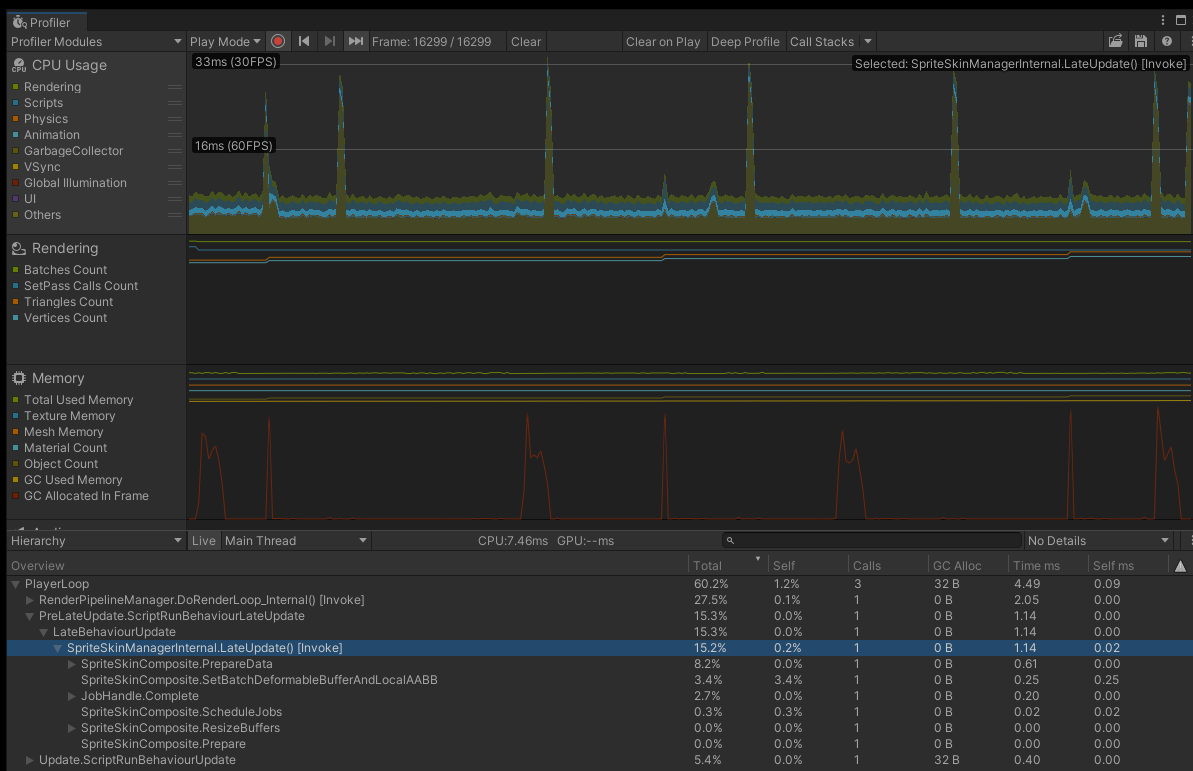
Unity Profiler. Left: before animation backing was enabled, Right: after. Cyan area represents CPU time spent on animation (lower is better).
8 Dec 2021
It seems that something about the newly added animated animals was tanking game performance. It was a good opportunity to get more familiar with Unity’s Profiler tool.
I saw plenty of CPU use related to code running on the SpriteSkin component – part of the framework used to animate the animals. Narrowing this down helped me find a fix – indeed, enabling animation batching all but eliminated the issue (Unity Technologies 2019a).
Later that day, I installed the Cinemachine package to help manage the in-game camera as well as to capture footage for our trailer (Unity Technologies 2019b).
9 Dec 2021
The prototype was coming together – I added a large office building on the side, but transparency is not yet working correctly.
We showed the prototype during a weekly webinar with other students present, and they found it difficult to spot the bear; Miranda subsequently replaced it with a darker one.
12 Dec 2021
I copied assets and scenery objects made by Miranda into the scene, and made a simple animation for the arriving train.
Using Cinemachine in conjunction with the Unity Recorder, it became easy to set up a number of animated virtual cameras to take shots like the one on the left.
I toned down the colour correction later on, based on Miranda’s advice that a morning should look more blue / purple.
Squirrels exhibiting some rendering issues up close – displaced tails and incorrect layer sorting (e.g. briefcase behind body).
13 Dec 2021
I used Miranda’s new textures to decorate construction spaces with signs. We have been having ongoing issues with the animation of the ground squirrels.
Their tails being underground is something we managed to fix, however their fur continues to flicker as they move. This is because we have the option of using one of two materials – the default Sprite material that renders the squirrels correctly on close-up, or one that supports the correct handling of transparency, which becomes apparent with more buildings around.
Not having too much time at this point, for the purposes of the trailer I will have to switch between the materials depending on the kind of shot we want to take.
Trailer
The game’s trailer was one thing I was the most keen on perfecting – I expected that it would be the one piece of media I would show publicly the most. When me and Miranda were spliting and assigning tasks in the weeks leading up to the New Year, I happily took on the role of planning, recording and editing the trailer together.
This work happened simultaneously with adding many late modifications to our prototype. So chronologically, we have to step a few weeks back.
24 Nov 2021
When looking for music suitable for the trailer, the city theme of the game soon made me think of an iconic piece by George Gershwin, Rhapsody In Blue, often associated with the city of New York (1924).
Fortunately, the year prior, the original composition had entered the public domain after 95 years, giving us the opportunity to either use the original acoustic recording, or create a new arrangement (Pagels 2020).
I felt that the quality of the recordings at the time was not appropriate for use in a modern trailer, however thanks to the availability of the original composition’s transcripts, it would be feasible to use key parts and recreate them with digital instruments.
This would also allow us to adapt the music to our game concept better; pairing cute animals with playful instruments such as a kazoo, flute or xylophone. My inspiration for this was the MitchiriNeko marching band video (Frencel Co., Ltd. 2013).
29 Nov 2021
Developer Chris Wulf in his presentation, The Art of the Pitch Deck, recommends setting up a way to quickly record footage in your project as soon as possible (2020).
It is at this point that I’ve set up Unity Recorder in the project – not just for the trailer, but also to capture movies and GIFs from this stage of development.
30 Nov 2021
It occurred to me that I could purchase a bear paw-like glove to make our logo more lively.
By having a small live-action element, we could reinforce the idea that there are people behind the project who put care and effort into it.
I arranged parts of the song to be played by virtual instruments in Garageband, with the help of a free transcript from 8notes.com (Red Balloon Technology 2021).
18 Dec 2021
I used Apple’s Garageband to arrange the composition, as it was one of the free tools I had available at the time, and I was already familiar with much of it. One challenge I’ve had was in trying to find and import new instruments, as many of the freely available plugins were either Windows only (Garageband is Mac software), or limited for use in a 32-bit environment due to age.
Fortunately, the use of widely available SF2 soundfonts (essentially – files containing instrument sound samples) was possible (Monomeeth 2017).
As Garageband’s instrument library did not come with a kazoo, I used a soundfont created and distributed freely by Bruno Dido (2021).
Apple also offered many animal and city sound effects in its Garageband library; however I found it easier to apply them later on at the editing stage. Since my editing suite was not compatible with Apple’s .caf format sound files, I needed to batch convert them with the afconvert utility (AABSTRKT 2013).
The final music piece, uploaded to Soundcloud.
19 Dec 2021
I finished the musical piece. The work took approximately 4 days (16.5h), but I think it was worth it, as it would give our trailer its own identity, compared to more generic-sounding royalty free music.
Although not strictly planning shot-for-shot, I graphed out the intensity I was looking for from each part of the trailer, and what kind of footage would be appropriate at different times.
Before recording any footage for the trailer, I needed to make sure I knew what to look for in advance, so I took a day for planning on the team’s Miro board.
One of the immediate issues I noticed was the need to deliver a high-impact viewing experience at the very start and end of the trailer (Ageno 2019). Yet, the way I originally envisioned it, the trailer would begin with a gentle flute composition and a peaceful sequence showing the city without any traffic. I felt that the slow build-up of the trailer was an appropriate way to structure it like a story – on the other hand, I understood the need to capture the audience’s attention in the first few seconds.
The answer to that was using a mini-trailer, teasing some of the most interesting moments before beginning the trailer proper (Videopixie 2015).
I also made sure we had a call to action at the end. If the game was in development, we would use a version calling to add the game to the viewers’ Steam wishlists. As we were only generating interest, we also made a version simply asking to follow the @Squappybara Twitter account. Using the live action bear paw would work well at this point to make a stronger impression at the end (Murdico 2019).
20 – 22 Dec 2021
At this time, I made final changes to the prototype, mostly concerning the playback of animations, animal behaviour, and ensuring Miranda’s art was visible. I increased the rendering quality and tweaked post-processing in preparation for recording.
23 – 28 Dec 2021
There have been four major challenges while recording and editing.
- Recording quality. The “high quality” preset of the Unity Recorder for recording MP4 files appeared too compressed. Thankfully, I tested that early, so I tried a variety of formats, eventually settling on WEBM, and converting it to an intermediary format prior to editing. Unfortunately, recording in WEBM format was more CPU-intensive, which contributed to the second issue.
- Recording speed. During the festive period I was away from my usual workstation, and have been using a 2013 Macbook Pro for development, recording, and editing. As a result, I could only record the game at approximately 5% its speed. Thankfully, since there was a plan present, I could reduce overshooting footage to a minimum. The practice of recording in slow motion however led to a third issue.
- Buggy camera behaviour. Certain features, such as playing back independent animation clips, or Cinemachine’s noise simulating a handheld shaky camera, executed their behaviour at full speed even when Unity Recorder was capturing footage in slow-motion. This led to extremely choppy or shaky resulting footage, even if this was not apparent while recording. For the first issue, I made sure all animations were triggered internally by the game’s logic (e.g. by being used in a state machine). For the latter, I had to compensate by reducing the shake frequency drastically.
- The aforementioned rendering issues with animal sprites, and either having to choose between correctly using layers (which looked better on close-ups) or correctly looking transparency (when certain buildings were in view). We did not have a solution, so I ended up switching materials between shots depending on the angle I needed.
29 Dec 2021
After showing a draft of the trailer to Miranda, she suggested that the mini-trailer at beginning appeared quick and confusing.
In response, I had a look at the popular @microtrailers bot account on Twitter, known for uploading six-second versions of video game trailers (Lambe 2021). Those trailers appeared to either take form of a single six second shot, or feature six one-second shots, whereas my draft had two shots per second. I halved the number of shots and reduced the pacing to one second per shot, and I think the start became easier to digest.
31 Dec 2021
Marketing materials

In the weeks leading up to our deadline, me and Miranda split up the task of preparing materials for our marketing campaign by individual documents. It is important to note that we did not work in complete isolation, and once the bulk of each item was done, we reviewed each other’s progress and collaborated on the final result.
A selection of fake tweets I prepared to demonstrate the content, language and interactions we were aiming for on Twitter.
Twitter marketing
I prepared a series of fake tweets using an online tool called Tweetgen (2021) in order to demonstrate the kind of content, language, and interactions we would foster as part of our game’s marketing campaign.
Specifically, I was hoping to conduct conversational marketing – using direct, natural language, asking questions, and injecting personality into tweets.
Social Media Marketing All-In-One had been a helpful resource in this endeavour, even listing the many kinds of interactions brands can have on Twitter – such as fostering discussion, offering customer support and giving out perks – which made it easier for me to cover a wider variety of situations in the mockups (Zimmerman and Ng 2017 : 288-289).
I was reluctant to add an example of Twitter Chats (scheduled Q&A sessions), not being sure whether that was still an actively followed practice; however the Twitter business blog still lists successful examples in a post-COVID world (Alton 2020).
Imgur marketing
In my original business plan, I wrote about using the image sharing website Imgur alongside Twitter, with a heavier focus on GIFs of the game. The community of Imgur however does not value the brand building that happens on Twitter.
Marketing blogger Chris Zukowski writes: “Imgur is like the Groundhog Day of social media. Every day is like starting out with 0 following and nobody will remember you exist a day later” (2019). Considering that, I felt that it would be better to post from a personal profile and include a CTA (Call to Action) only when a post gains traction and there is visible interest.
The mockups I’ve created relate to the human experiences of obtaining a skill and working on a dream project, or simply show off something “cool” or “surprising”. I also attempted advice from other game developers working on the platform – always use GIFs, be human, don’t use link shorteners (DancesWithCapricorns 2018).
One important type of post I ommitted was what Zukowski calls story mode – a longer, multi-image post which often appeals to the fantasy of wish fulfilment, and has a higher chance of becoming viral (2019). I considered potential story prompts such as:
- Not long ago, I had no idea how to make a game, now we have a studio
- The history of cute animal mascots in games
- Birth of a mascot (using Miranda’s experience of crafting animal trinkets)
The reason for not writing the posts was simply a lack of time to do so, but in an actual campaign we would certainly try and write a number of those stories to see if they resonate with people.
Press release
While I was working on the trailer and other marketing materials, Miranda already had a draft of our press release ready for review. We were still debating the heading and subheading, and felt that the first few paraghaphs could be more streamlined.
I used advice from the templates found in A Practical Guide To Indie Game Marketing and kept a two-statement, self contained opening paragraph, as well as added a few details to make the press release more standard (e.g. the text “For Immediate Release” which makes it clear the news can be publicised) (Dreskin 2016). Writing the heading and subheading has been a challenge – with our already long game title, I wanted to pack in key information, while keeping them somewhat concise with room for levity.
Final pitch deck
We revisited the pitch deck – by this point, Miranda had plenty of art available to completely overhaul the graphic design.
I replaced the original full-size gampleay videos with new recordings from the prototype. We continued to use the sales projections and roadmap from my original business plan; however in response to feedback the budget was adjusted.
While reviewing, I made minute adjustments to the text and layout, while being mindful of not overwhelming the viewer with text.
By the 7th of January 2022, we finished preparing all supplementary marketing materials. Looking back at the experience, it has felt fresh (and oftentimes challenging) to look at game dev through the lens of marketing. Still, being able to take steps to promote a game is a key skill for an indie developer, especially in a small team where this responsibility is likely to be shared. My business plan estimated marketing tasks to form the third largest workstream, after art and programming.
At many points, having another team member to get feedback and exchange ideas has been invaluable – especially when our views were different.
If the project goes ahead, updates will be posted on the @Squappybara channel.
References
AABSTRKT. 2013. “Command Line – How Do I Use Afconvert to Convert All the Files in a Directory from Wav to Caf?” Stack Overflow [online]. Available at: https://stackoverflow.com/a/18309169/4636330 [accessed 19 Jan 2022].
AGENO, Mauricio. 2019. “How to Create a Gameplay Trailer.” Modus Games [online]. Available at: https://modusgames.com/how-to-create-a-gameplay-trailer/ [accessed 19 Jan 2022].
ALTON, Liz. 2020. “How Twitter Chats Can Improve Your Audience Engagement Strategy.” business.twitter.com [online]. Available at: https://business.twitter.com/en/blog/how-to-promote-your-twitter-chat.html [accessed 19 Jan 2022].
BRACKEYS. 2018. “SCRIPTABLE OBJECTS in Unity.” YouTube. Available at: https://www.youtube.com/watch?v=aPXvoWVabPY [accessed 20 Feb 2021].
BURG, Dustin. 2019. “Cuphead Developer’s Tips to Optimize for Nintendo Switch.” Unity Blog [online]. Available at: https://blog.unity.com/games/cuphead-developers-tips-to-optimize-for-nintendo-switch [accessed 15 Jan 2022].
BYCER, Josh. 2020. “The Importance of a Well Defined Core Gameplay Loop.” Game Developer [online]. Available at: https://www.gamedeveloper.com/disciplines/the-importance-of-a-well-defined-core-gameplay-loop [accessed 13 Jan 2022].
CSNOMADPRODUCTIONS. 2021. “Bug – Possible Issue with Editor Hangups, Enter/Exit Playmode, and PreFabs/ProBuilder (with Workaround).” Unity Forum [online]. Available at: https://forum.unity.com/threads/possible-issue-with-editor-hangups-enter-exit-playmode-and-prefabs-probuilder-with-workaround.1116667/ [accessed 17 Jan 2022].
DANCESWITHCAPRICORNS. 2018. “Let’s Share Our Experiences on Imgur Posts for Our Games!” Reddit.com [online]. Available at: https://www.reddit.com/r/gamedev/comments/7zdkrv/lets_share_our_experiences_on_imgur_posts_for_our/ [accessed 2 Jan 2022].
DIDO, Bruno. 2021. “New Soundfont Kazoo.” MuseScore.org [online]. Available at: https://musescore.org/en/node/315694 [accessed 19 Jan 2022].
DOUCET, Lars and LEVEL UP LABS, LLC. 2020. “Game Data Crunch: Data Is Delicious.” http://www.gamedatacrunch.com [online]. Available at: https://www.gamedatacrunch.com/ [accessed 30 Oct 2021].
DRESKIN, Joel. 2016. A Practical Guide to Indie Game Marketing. Boca Raton: CRC Press.
FUTTER, Michael. 2017. The GameDev Business Handbook : How to Build the Business You’ll Build Games With. London, England: Bithell Games.
FRENCEL CO., LTD. 2013. “みっちりねこマーチ – MitchiriNeko March – Cute Cat Characters in a Marching Band!” http://www.youtube.com [online]. Available at: https://www.youtube.com/watch?v=lAIGb1lfpBw [accessed 19 Jan 2022].
GERSHWIN, George. 1924. Rhapsody in Blue [78rpm Record]. Harms, Inc.
GHOST PATTERN. 2020. “Wayward Strand.” Notion [online]. Available at: https://www.notion.so/Wayward-Strand-983e49010fae4b2082164b674385e7f3 [accessed 15 Jan 2022].
GÓMEZ, Diana P. 2017. “5 Tips to Make a Teaser Trailer for Your Game.” Jaleo PR [online]. Available at: https://jaleopr.com/blog/tips-teaser-trailer-indie-game/ [accessed 19 Jan 2022].
GRANBERG, Aron. 2017. “A* Pathfinding Project.” arongranberg.com [online]. Available at: https://arongranberg.com/astar/.
HARYANTO, Boby. 2019. “How to Do Crazy 8’S Remotely.” Medium [online]. Available at: https://uxdesign.cc/how-to-do-crazy-8s-remotely-223d7fbd5e98 [accessed 12 Jun 2021].
KULTIMA, Annakaisa and Kati ALHA. 2011. Using the VNA Ideation Game at Global Game Jam. Available at: https://www.researchgate.net/publication/249335377_Using_the_VNA_Ideation_Game_at_Global_Game_Jam [accessed 18 Jun 2021].
LAMBE, Ichiro. 2021. “Steam Trailers in 6s.” Twitter [online]. Available at: https://twitter.com/microtrailers?s=20 [accessed 19 Jan 2022].
LOBB, Iain. 2021. “Creating Games with Appeal.” flex.falmouth.ac.uk [online]. Available at: https://flex.falmouth.ac.uk/courses/924/pages/week-3-lecture-creating-games-with-appeal?module_item_id=57447 [accessed 1 Nov 2021].
MONOMEETH. 2017. “How to Use SoundFonts in GarageBand 10.2?” Ask Different [online]. Available at: https://apple.stackexchange.com/questions/296101/how-to-use-soundfonts-in-garageband-10-2 [accessed 19 Jan 2022].
MURDICO, David. 2019. “Game Trailer & Social Video Production Tips for Marketers.” Supercool Creative Agency [online]. Available at: https://supercoolcreative.com/game-trailer-social-video-production-tips-marketers/ [accessed 19 Jan 2022].
PAGELS, Pam. 2020. “It’s 2020 by George! Rhapsody in Blue Is in the Public Domain – Hamon Arts Library Blog.” http://www.hamonlibraryblog.org [online]. Available at: https://www.hamonlibraryblog.org/2020/01/14/its-2020-by-george-rhapsody-in-blue-is-in-the-public-domain/ [accessed 18 Jan 2022].
RED BALLOON TECHNOLOGY LTD. 2021. “Gershwin – Rhapsody in Blue Sheet Music for Piano.” http://www.8notes.com [online]. Available at: https://www.8notes.com/scores/33405.asp [accessed 19 Jan 2022].
SCHELL, Jesse. 2019. The Art of Game Design : A Book of Lenses. Boca Raton: Taylor & Francis.
SHAGGUN. 2018. “Bending a Mesh with a Shader in Unity.” Gist [online]. Available at: https://gist.github.com/shaggun/50a9d39187f5516a870aba03528368ee [accessed 15 Jan 2022].
SKILLICORN, Chris. 2019. “How to Make a Video Game Trailer | Enjin Blog.” enjin.io [online]. Available at: https://enjin.io/blog/how-to-make-a-video-game-trailer [accessed 19 Jan 2022].
TWEETGEN. 2021. “Terms of Service | Tweetgen.” http://www.tweetgen.com [online]. Available at: https://www.tweetgen.com/terms/ [accessed 19 Jan 2022].
TYROLLER, Jonas. 2019. “Watch This before Making Your next Indie Game!” http://www.youtube.com [online]. Available at: https://www.youtube.com/watch?v=3Kzu5FdplV0 [accessed 16 Oct 2021].
UNITY TECHNOLOGIES. 2019a. “Introduction to 2D Animation | 2D Animation | 4.0.1.” docs.unity3d.com [online]. Available at: https://docs.unity3d.com/Packages/com.unity.2d.animation@4.0/manual/index.html [accessed 18 Jan 2022].
UNITY TECHNOLOGIES. 2019b. “Cinemachine Documentation | Package Manager UI Website.” docs.unity3d.com [online]. Available at: https://docs.unity3d.com/Packages/com.unity.cinemachine@2.2/manual/index.html [accessed 18 Jan 2022].
VIDEOPIXIE. 2015. “How to Make a Game Trailer.” http://www.videopixie.com [online]. Available at: https://www.videopixie.com/make-a-game-trailer [accessed 19 Jan 2022].
WULF, Christopher. 2020. “The Art of the Pitch Deck with Christopher Wulf.” YouTube [online]. Available at: https://youtu.be/70vQjrB76kc?t=896 [accessed 18 Jan 2022].
ZIMMERMAN, Jan and Deborah NG. 2017. Social Media Marketing All-In-One. Hoboken, Nj: John Wiley & Sons, Inc.
ZUBEK, Robert. 2010. Needs-Based AI. Available at: http://robert.zubek.net/publications/Needs-based-AI-draft.pdf [accessed 17 Jan 2022].
ZUKOWSKI, Chris. 2019. “How to Get on the Front Page of Imgur.” Game Developer [online]. Available at: https://www.gamedeveloper.com/business/how-to-get-on-the-front-page-of-imgur [accessed 19 Jan 2022].
Games
Faeria. 2017. Abrakan Entertainment, Versus Evil.
Loop Hero. 2021. Four Quarters, Devolver Digital.
Octopath Traveler. 2018. Square Enix, Square Enix.
One Step from Eden. 2020. Thomas Moon Kang, Maple Whispering Limited.
Paper Mario: The Origami King. 2020. Nintendo, Nintendo.
Ratropolis. 2020. Cassel Games, Cassel Games.
Slay The Spire. 2019. Mega Crit Games, Mega Crit Games.
The Sims. 2000. Maxis, Electronic Arts.
Wingspan [board game]. 2019. Elizabeth Hargrave, Stonemaier Games.
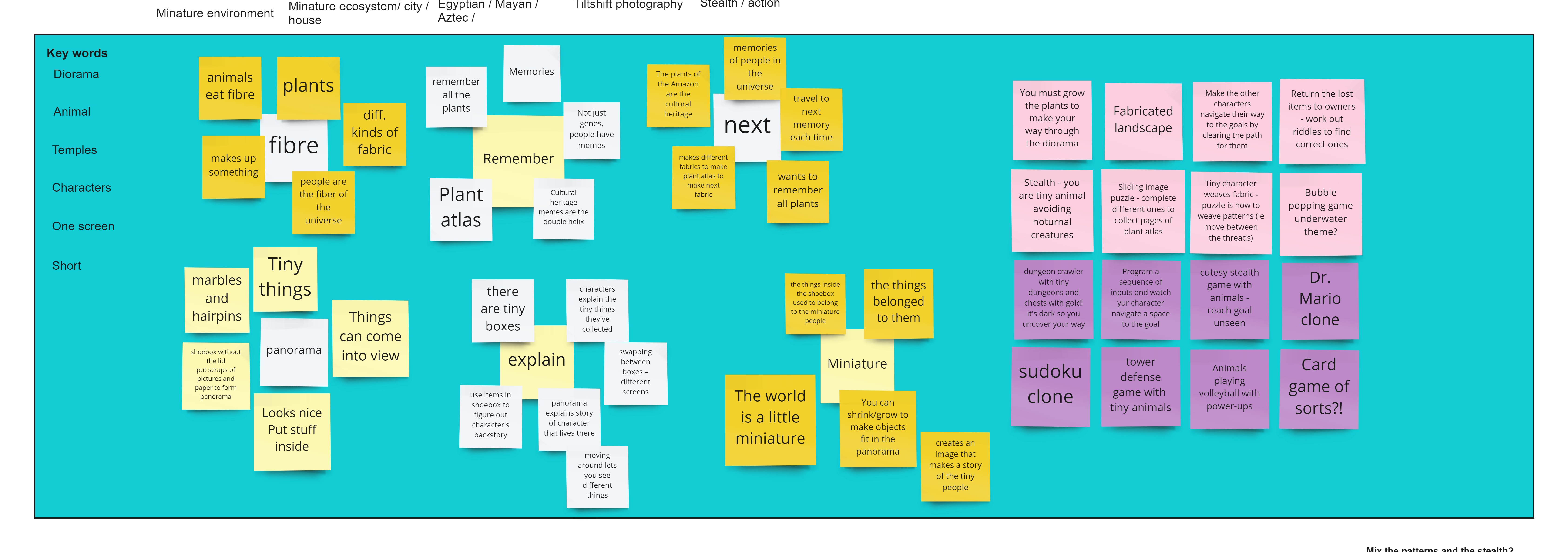
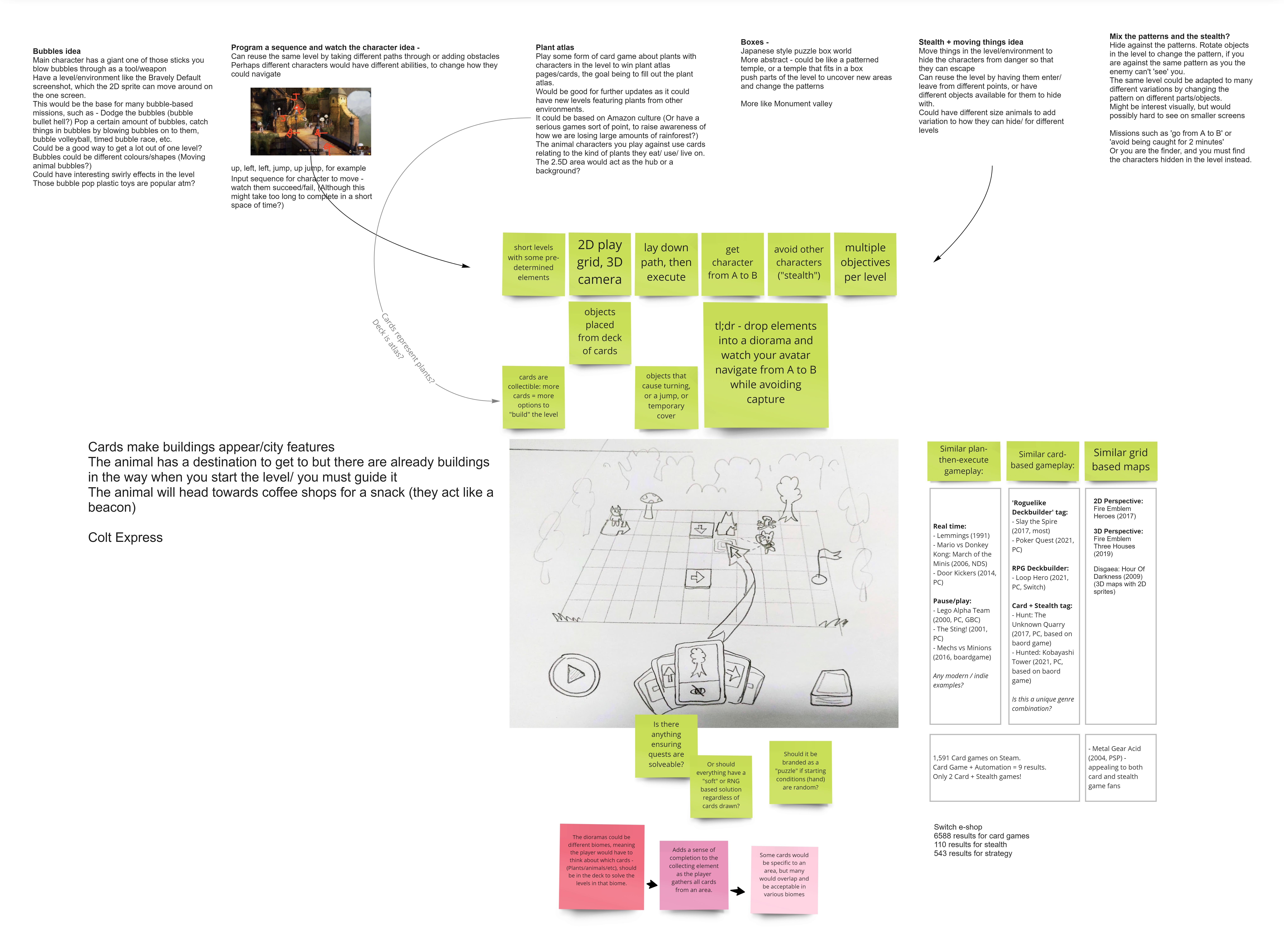
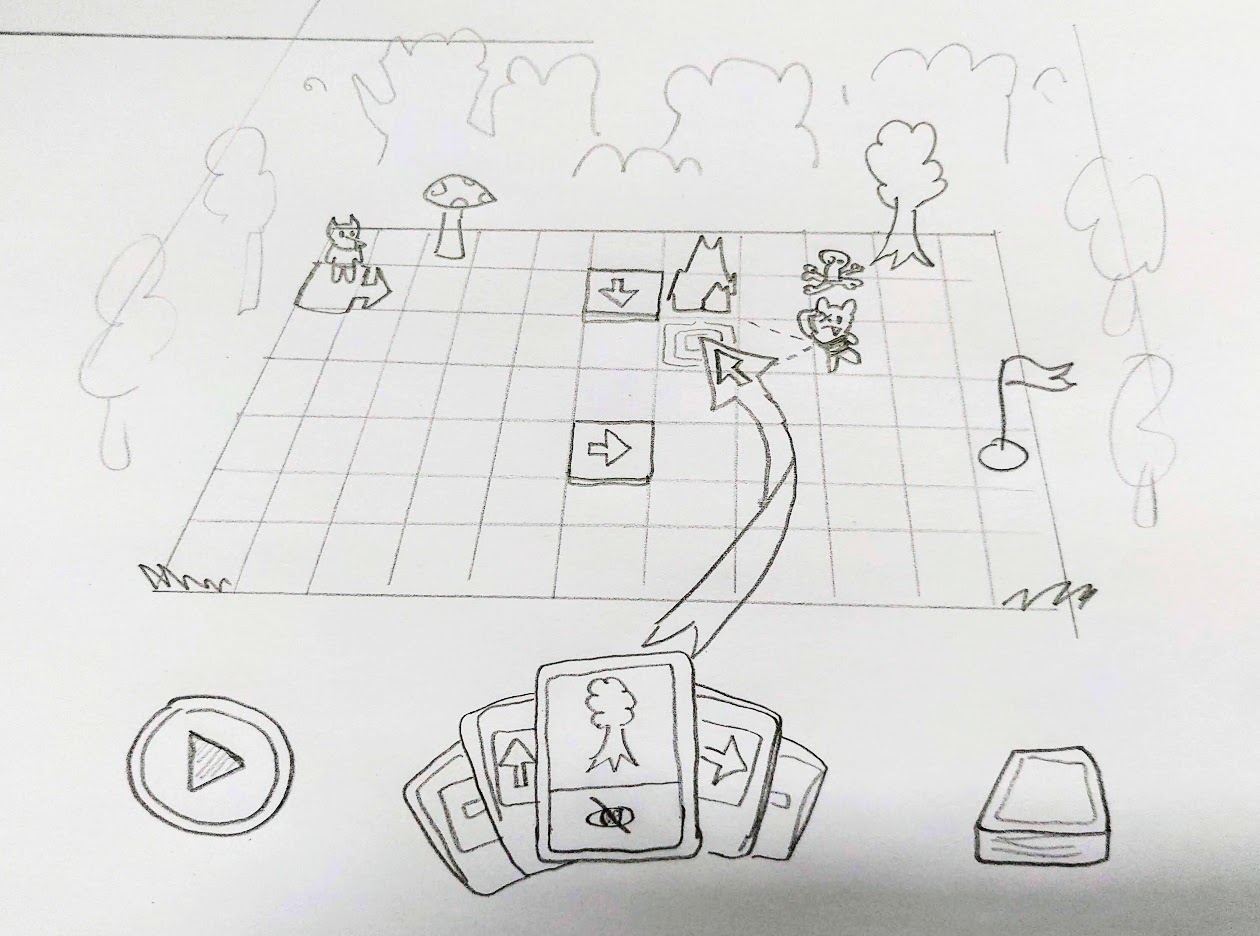
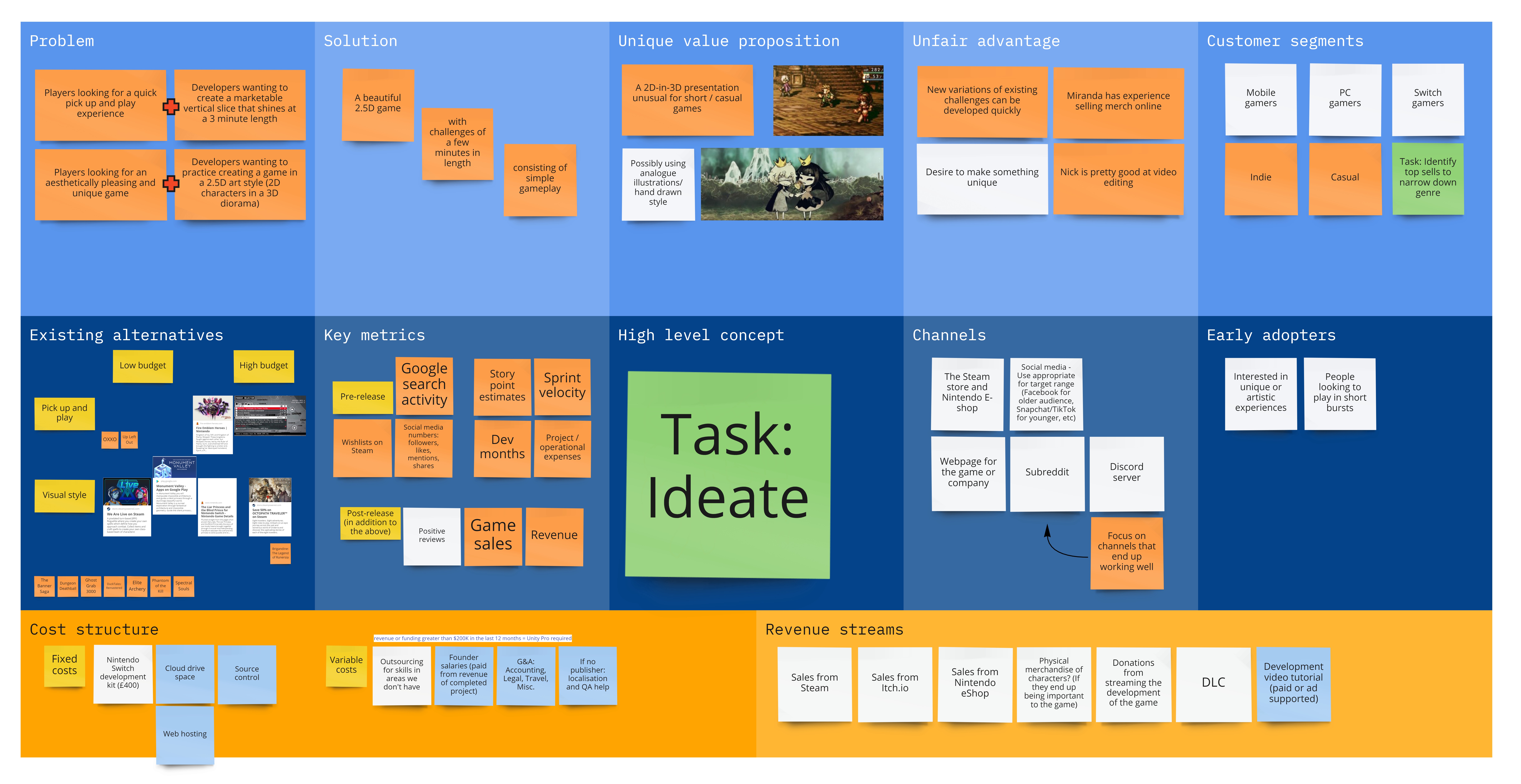
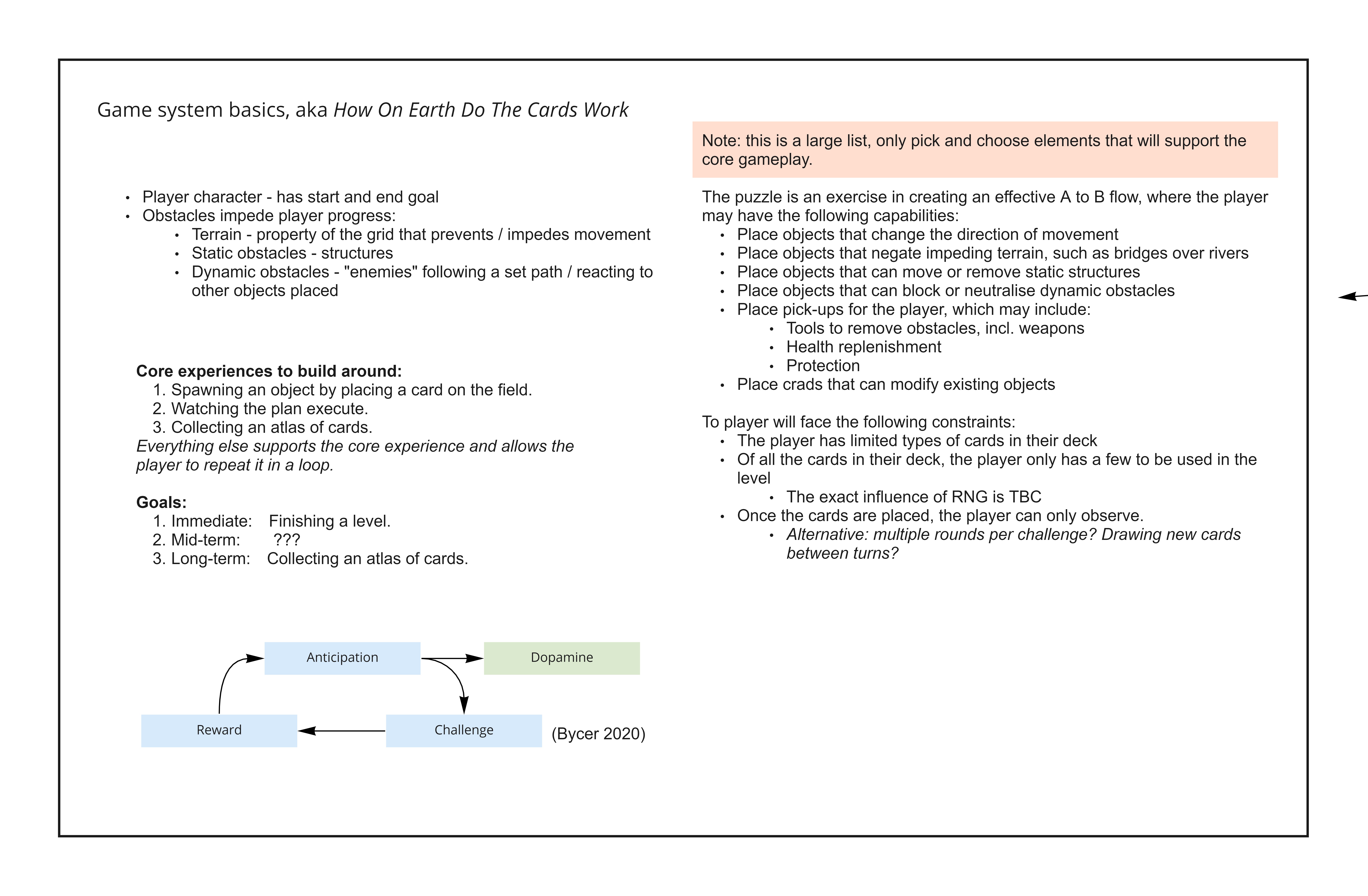

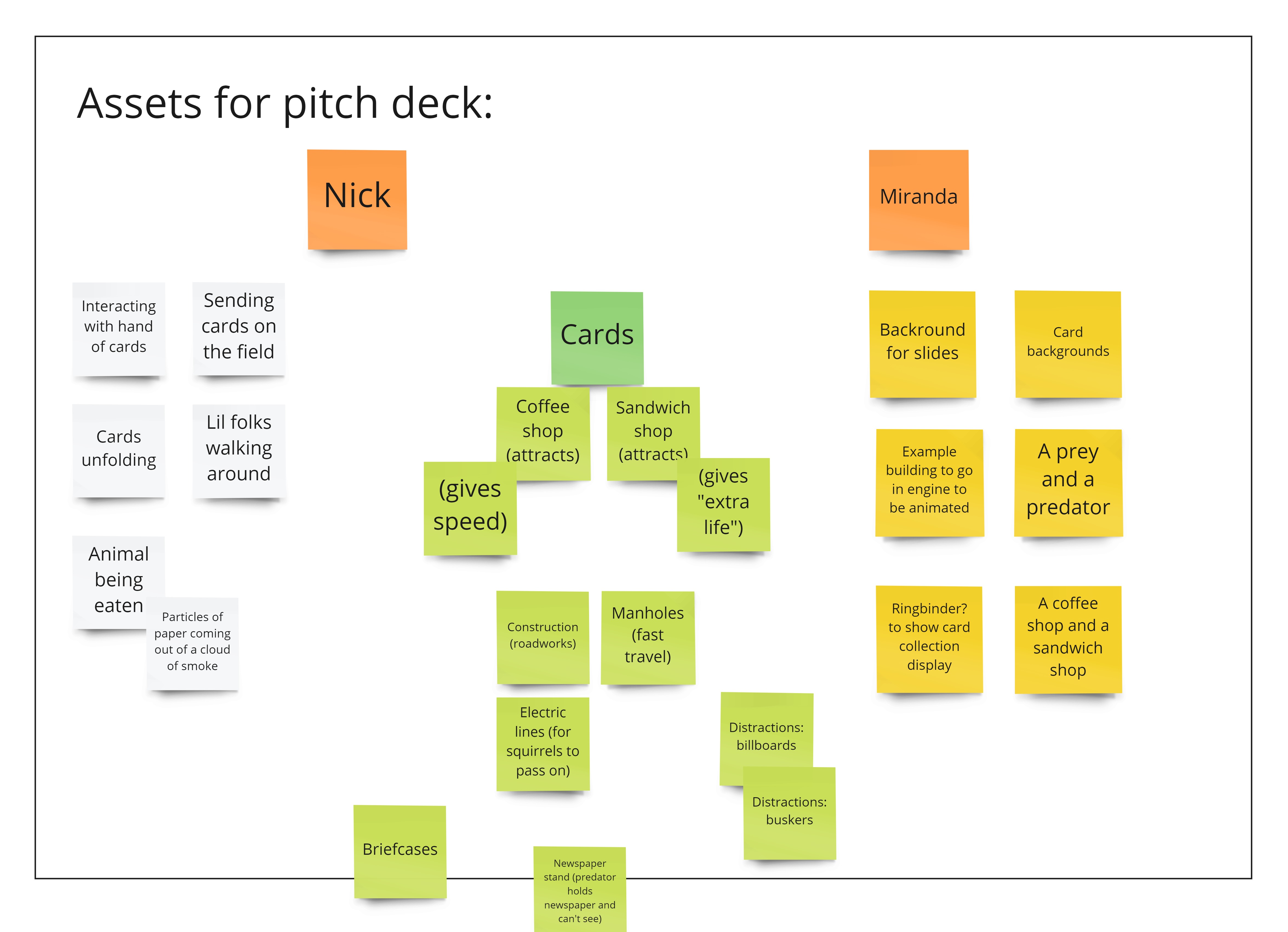
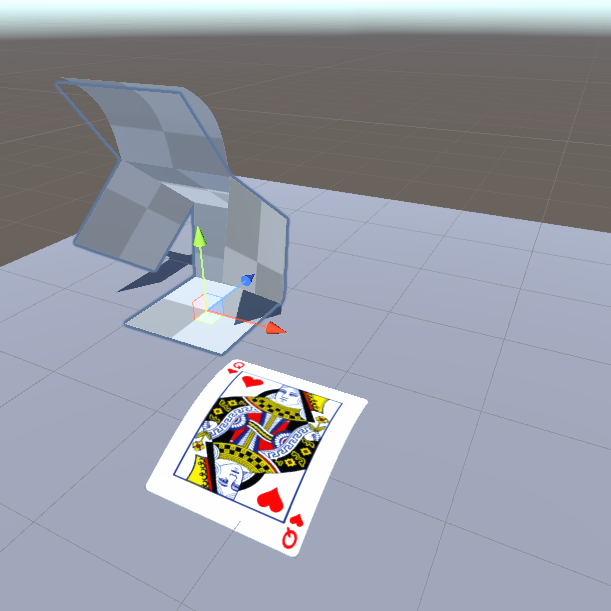
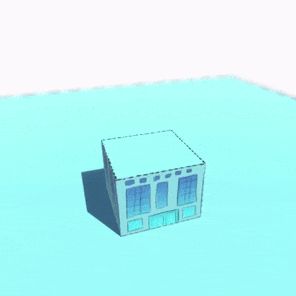






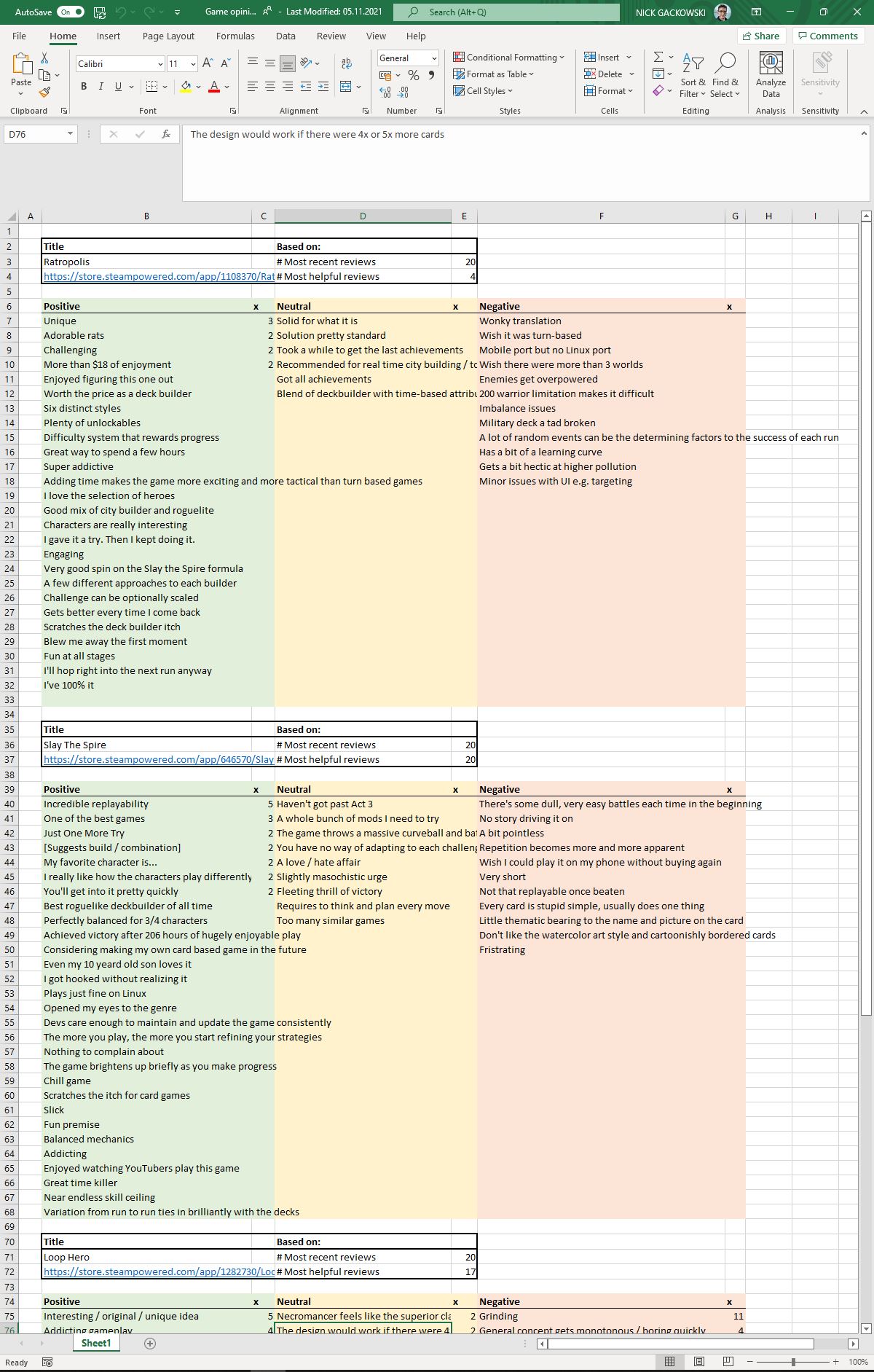
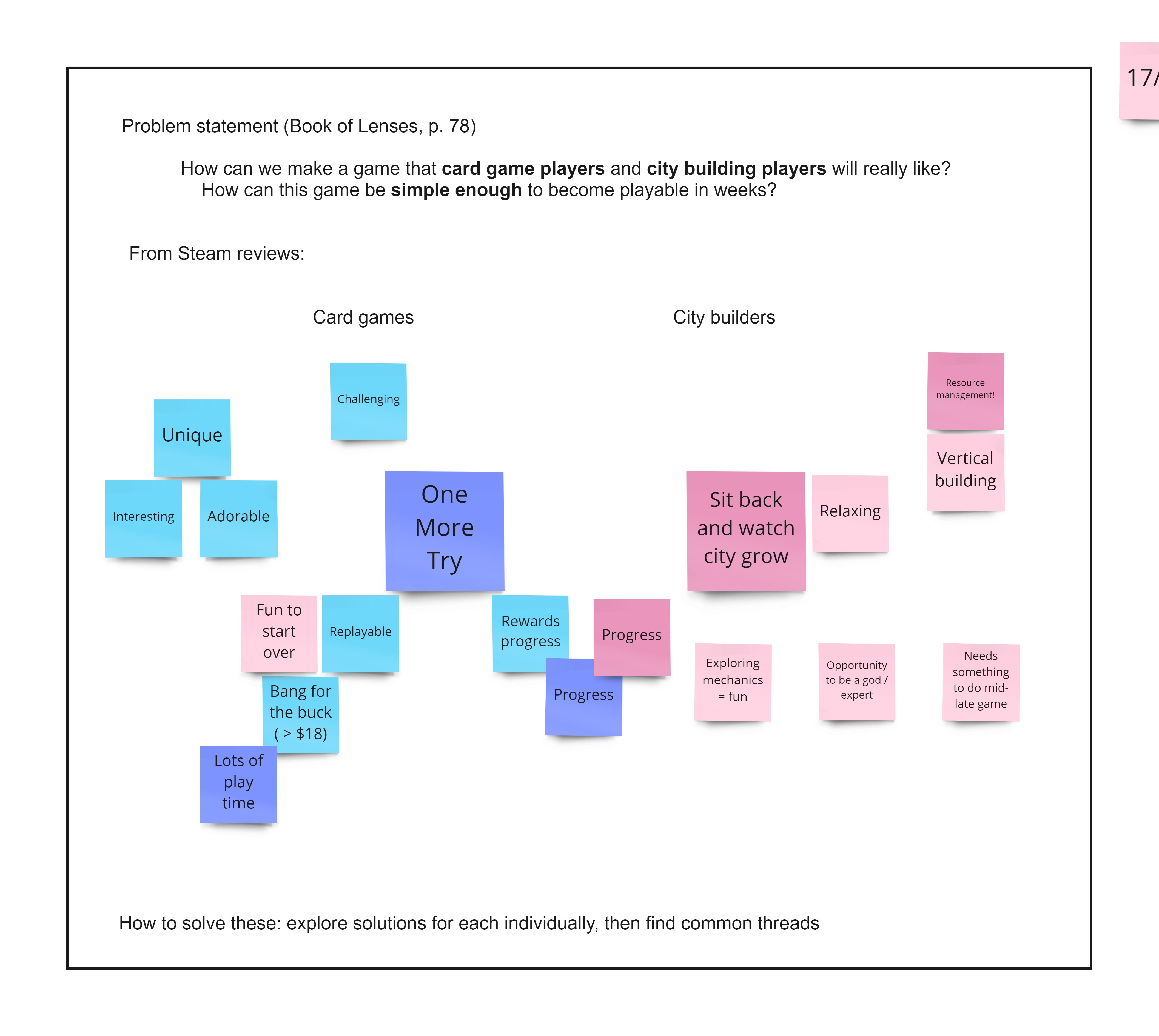





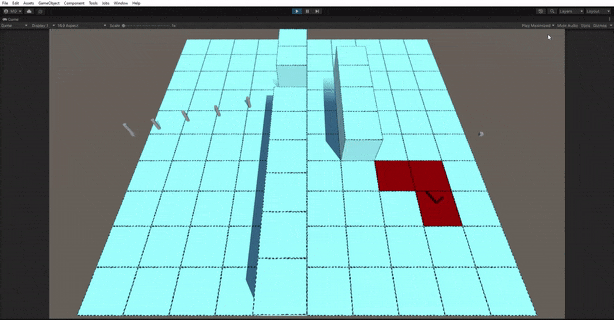
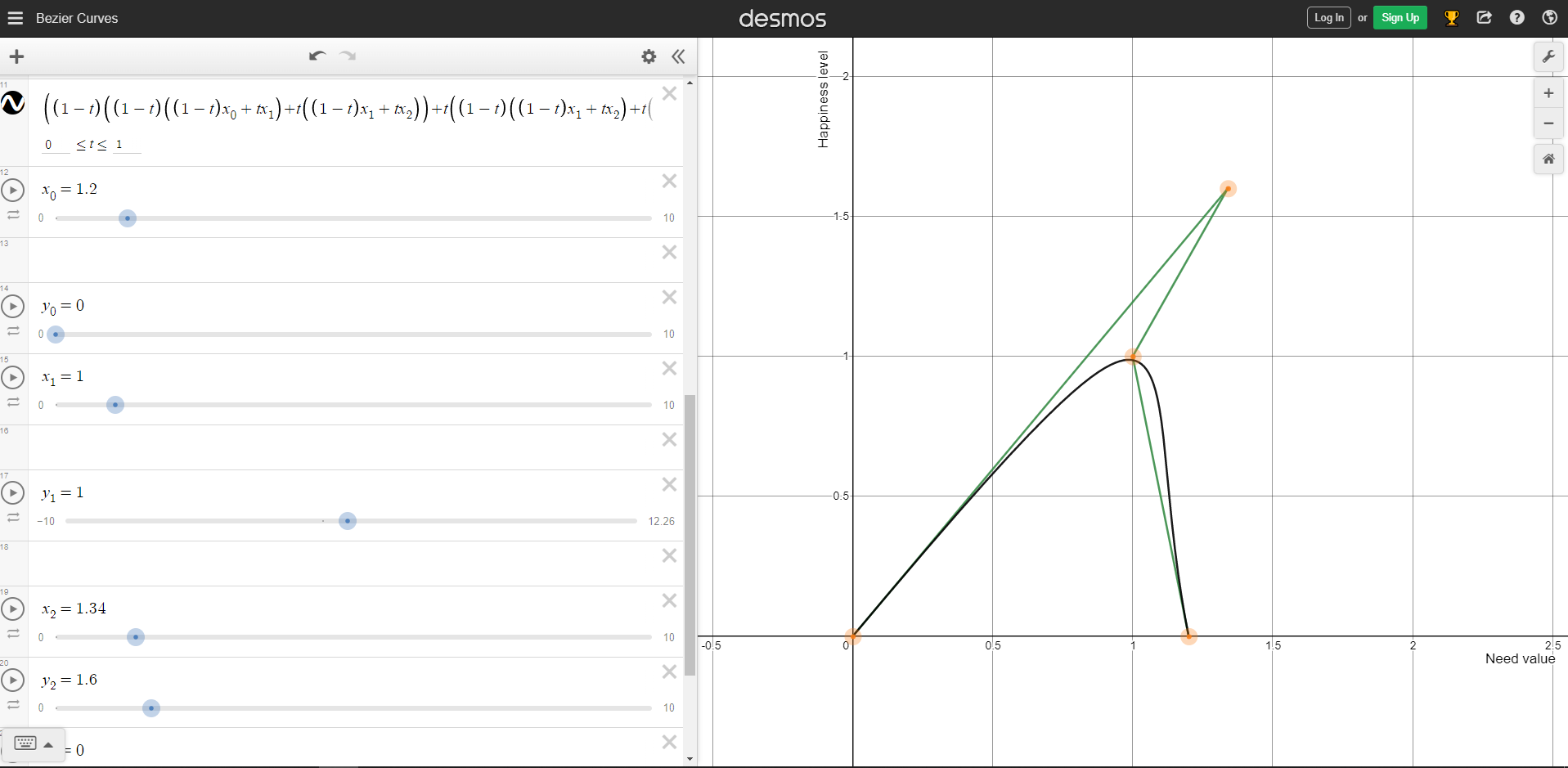

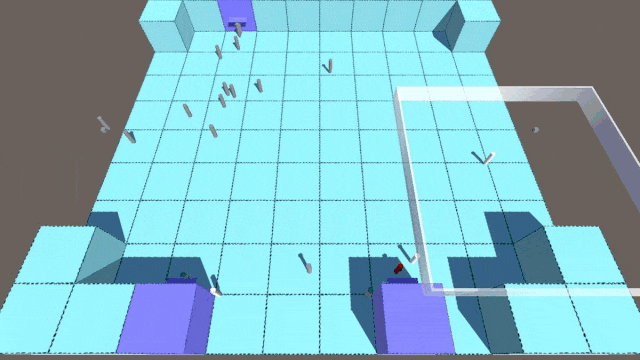






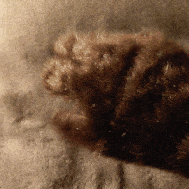
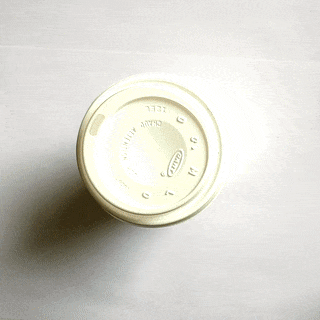
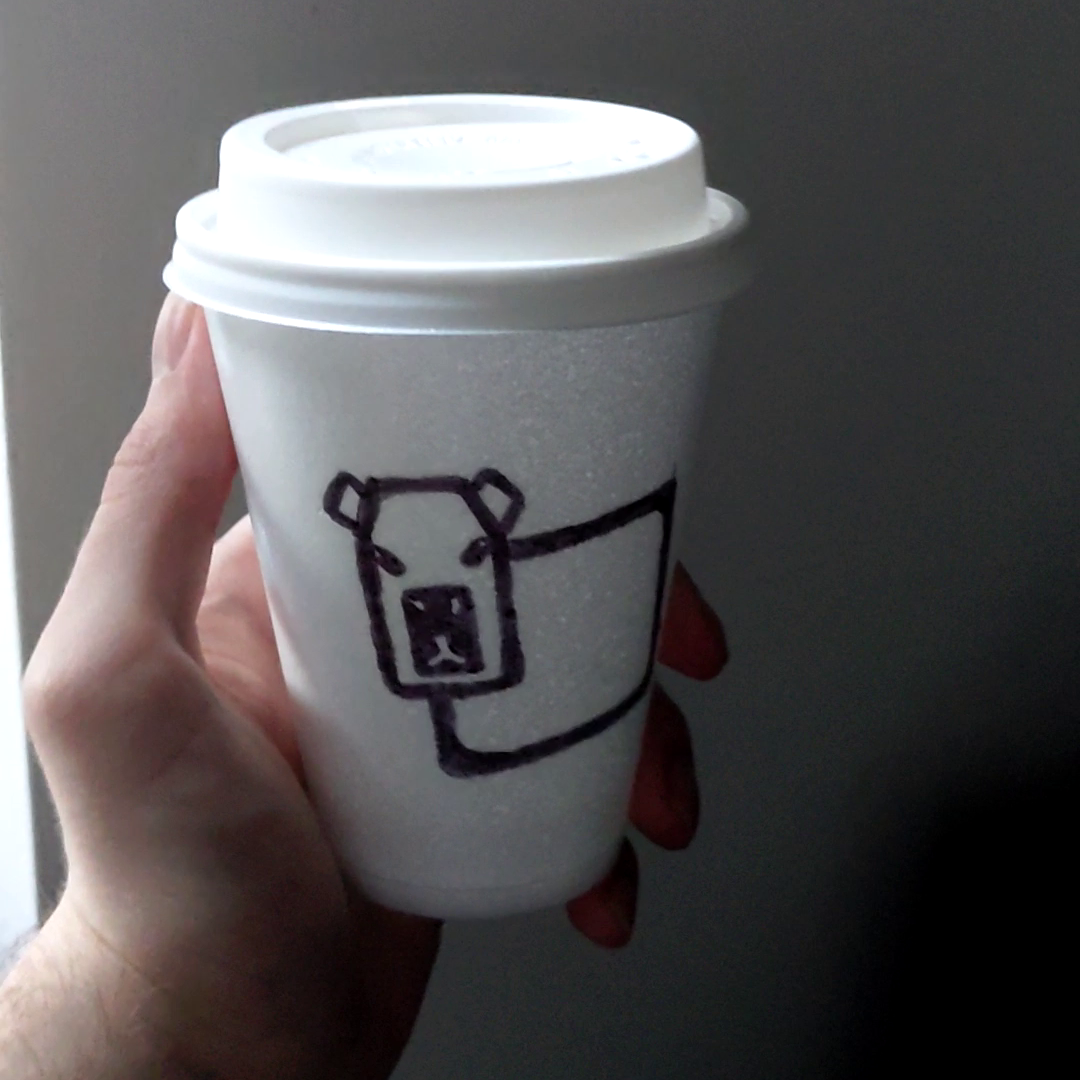
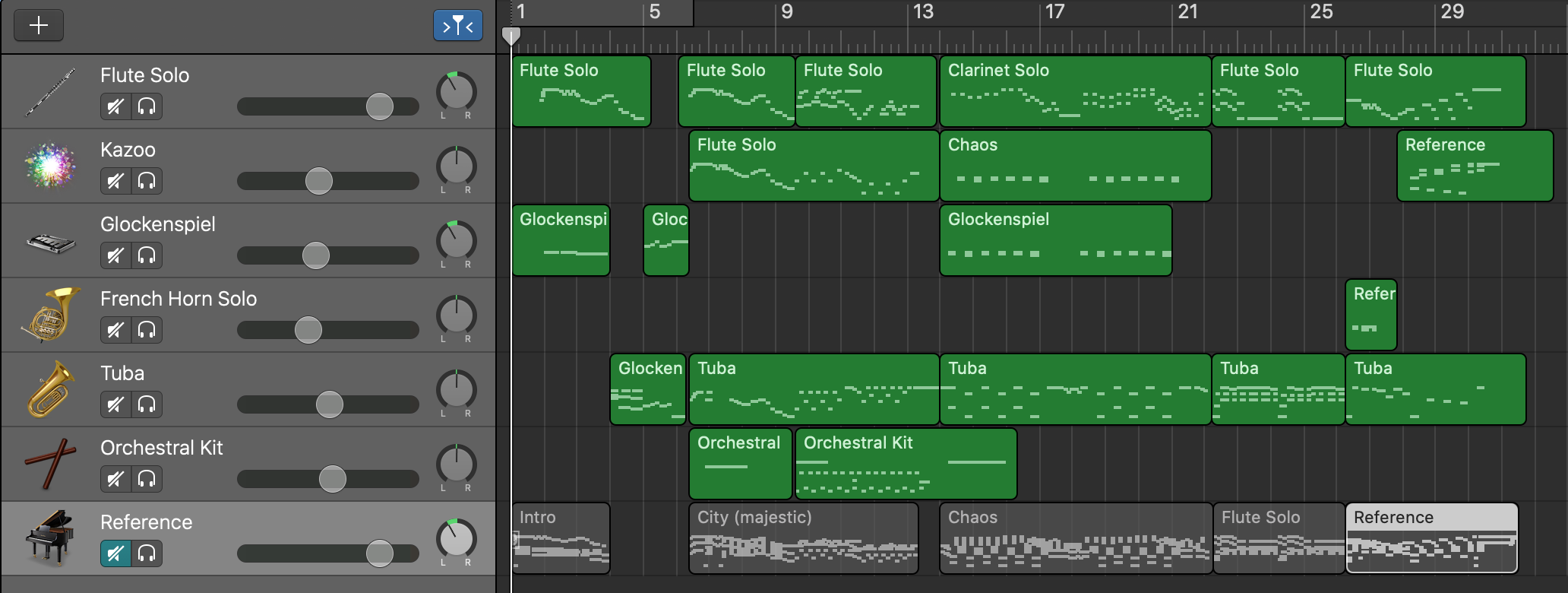
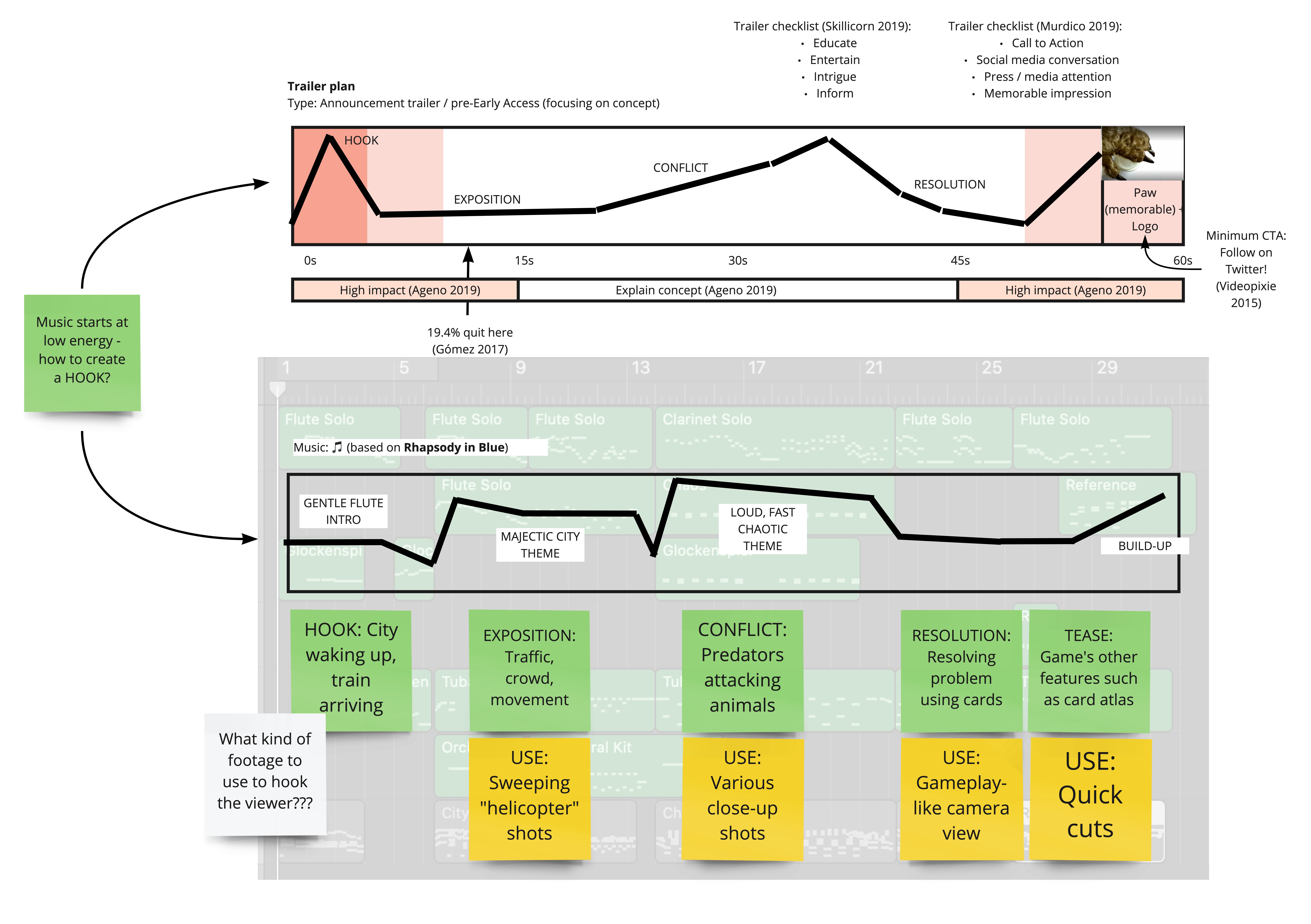

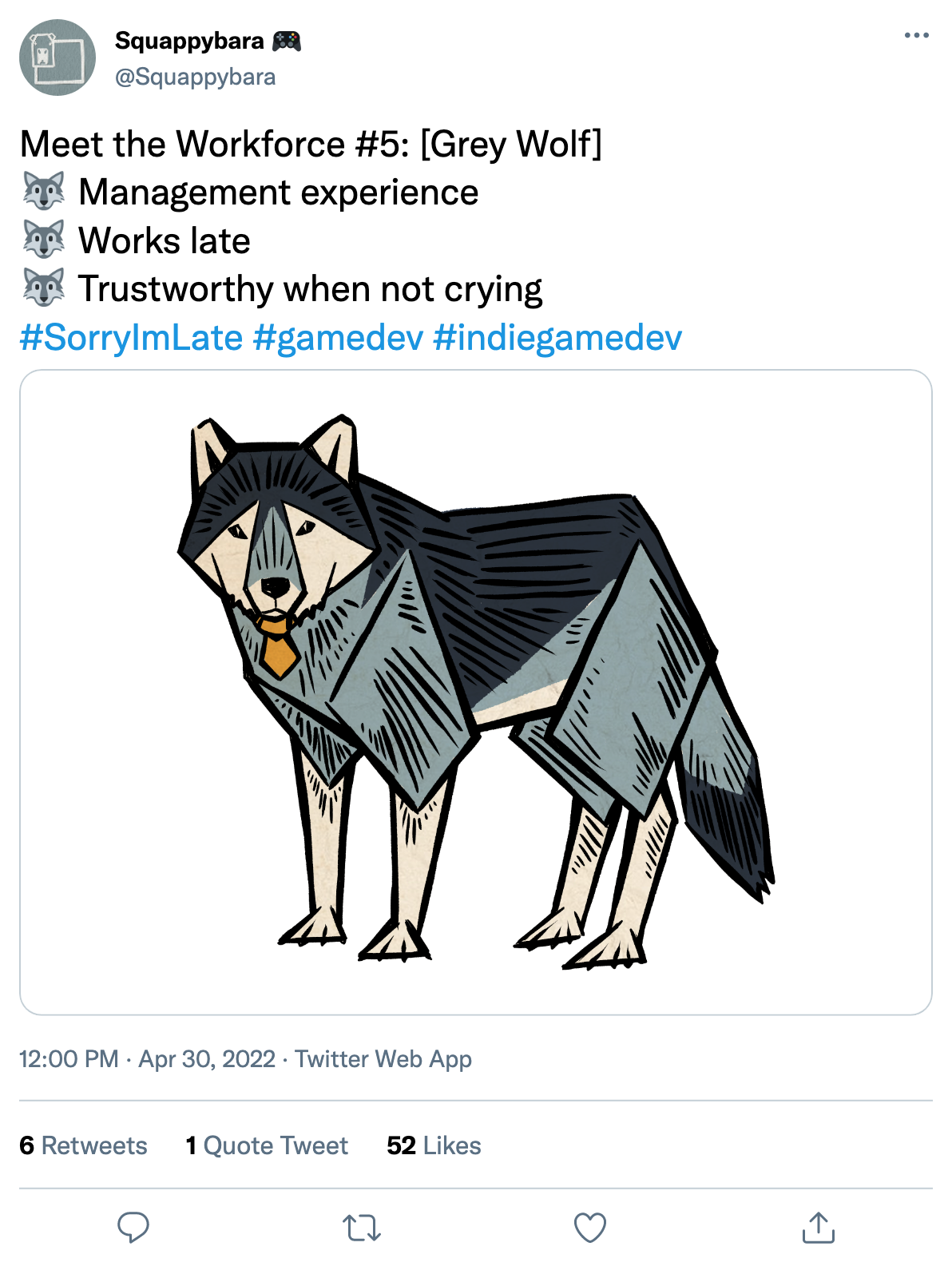

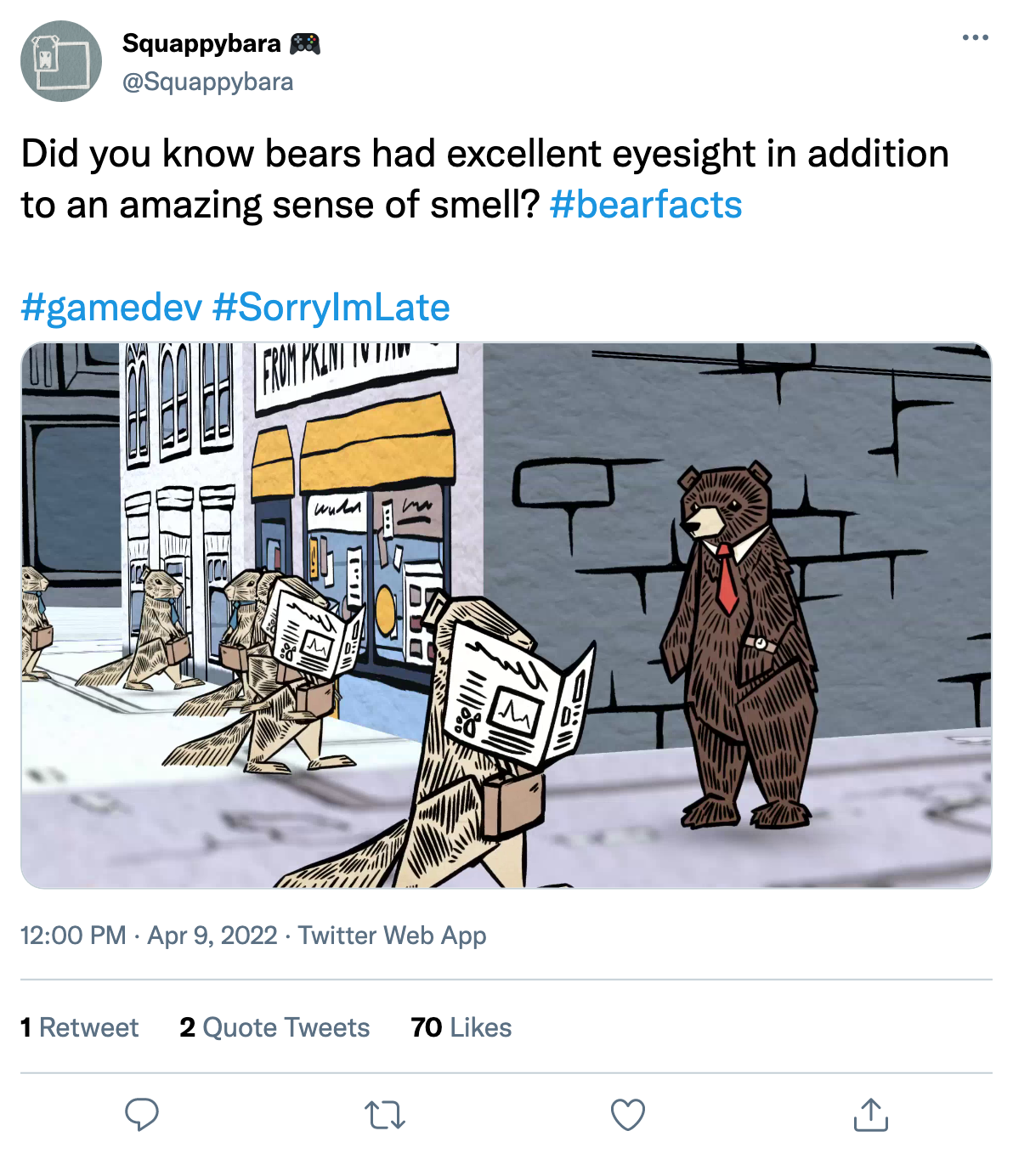




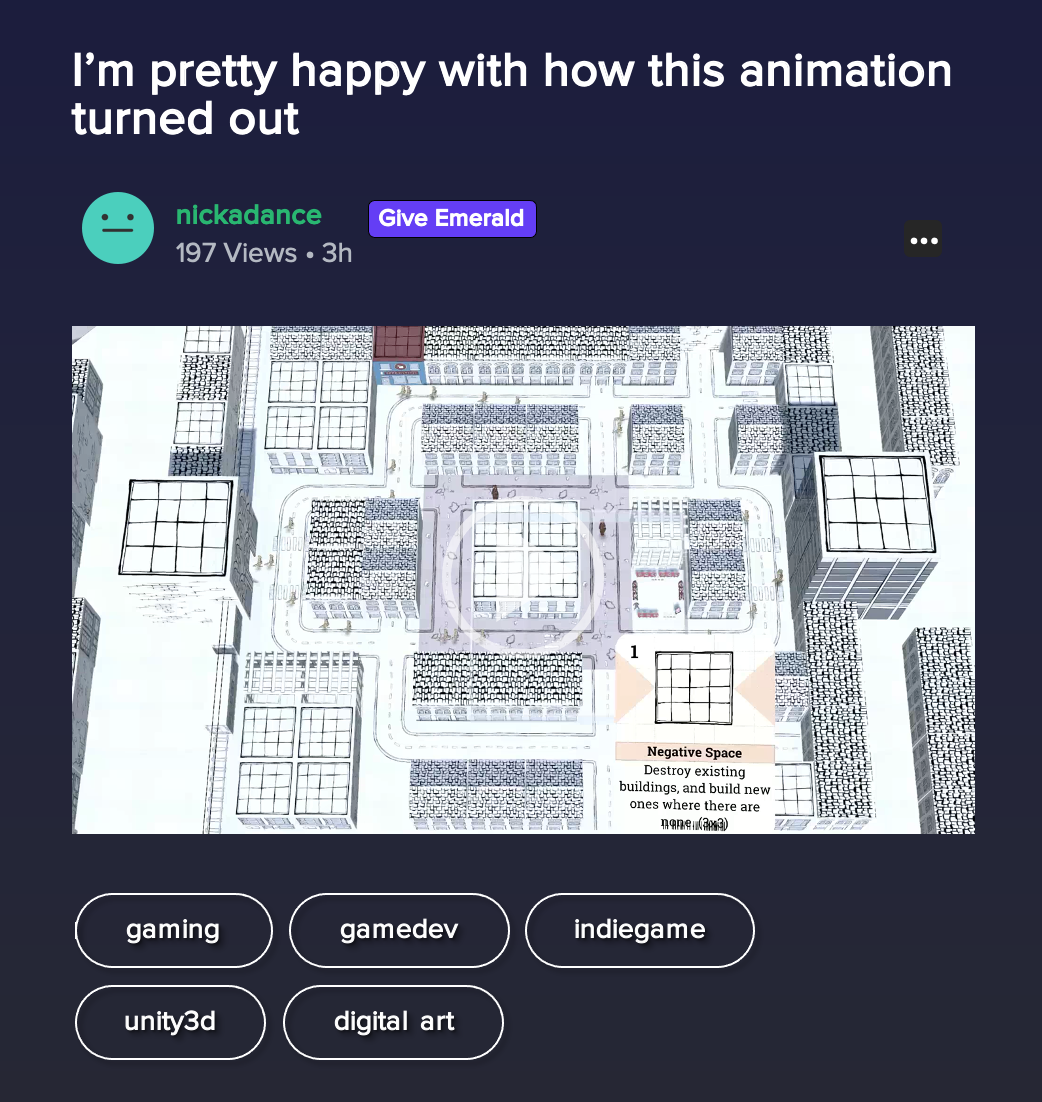


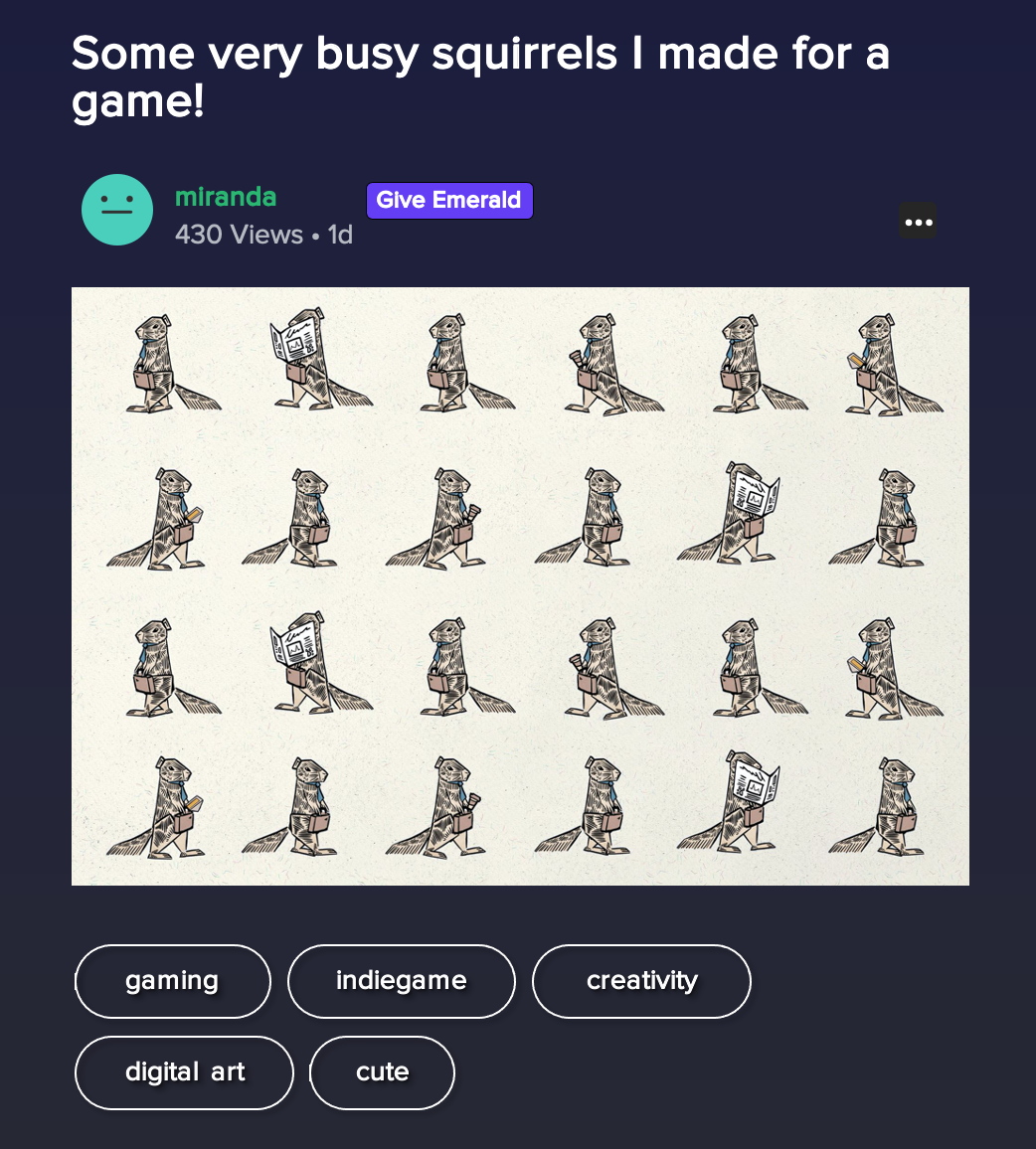




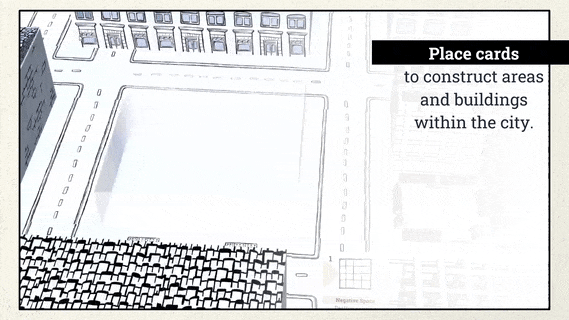
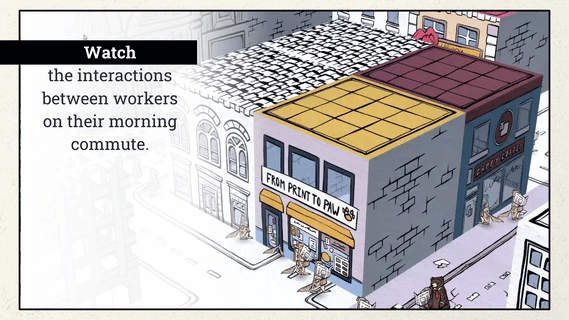

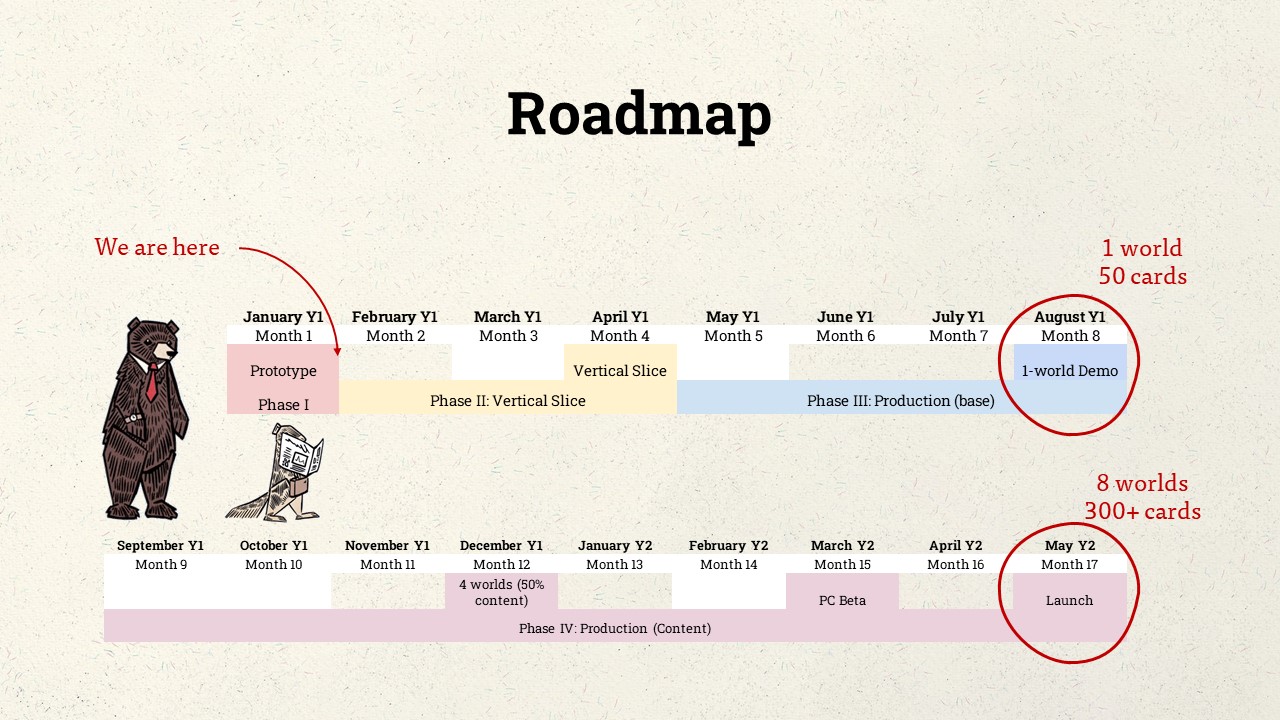

One thought on “The development of Sorry I’m Late”